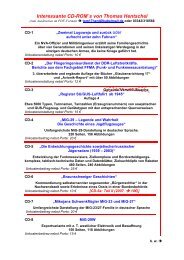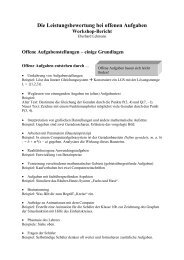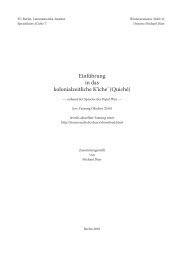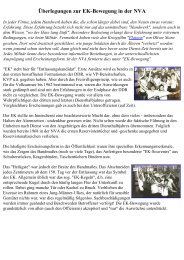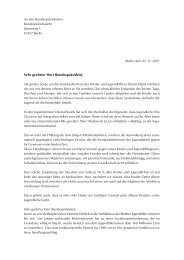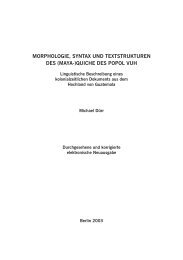SHADOW BOXING: INDONESIAN WRITERS ... - home . snafu . de
SHADOW BOXING: INDONESIAN WRITERS ... - home . snafu . de
SHADOW BOXING: INDONESIAN WRITERS ... - home . snafu . de
You also want an ePaper? Increase the reach of your titles
YUMPU automatically turns print PDFs into web optimized ePapers that Google loves.
Shadow Boxing 185<br />
final image of "Lengsernya Rahwana." On this occasion the monkeys are specifically<br />
aligned with the pro-Reform university stu<strong>de</strong>nts:<br />
Every time that the monkeys who represent nature are oppressed and forgotten,<br />
at that very moment Rahwana will be capable of shoving asi<strong>de</strong> the three<br />
mountains that are pinning him down, and come back and resume his absolute<br />
rule unhin<strong>de</strong>red. It's just the same with the stu<strong>de</strong>nts: if they are oppressed and<br />
forgotten in their every effort to bring about reformasi, at that very moment<br />
reformasi will be transformed into <strong>de</strong>formasi. 112<br />
Martin appears to suggest that the role of the monkeys in bringing about reformasi (and<br />
then ensuring that the gains of the reformasi movement are carried through to their<br />
logical conclusion) is crucial to the social <strong>de</strong>velopment of the Indonesian nation.<br />
Furthermore, Martin is also warning us that Dasamuka, a metaphor for dictatorship<br />
and repression, can come back at any time if the "monkey masses" of Indonesia are<br />
not vigilant.<br />
"Anoman Obong"<br />
Both Martin Suhartono's and Sindhunata's focus on the monkeys in their reworking<br />
of the Ramayana epic has been complemented by the efforts of other writers, who have<br />
chosen to fictionalize other characters of the Ramayana, such as Rahwana, Rama,<br />
Sinta, Hanoman, and Wibisana. This by no means downgra<strong>de</strong>s the monkeys' role as<br />
representations of ordinary Indonesians, and their role as discursive counters to<br />
Suharto's symbolic authority. In<strong>de</strong>ed, many Indonesians felt that Suharto's days were<br />
numbered from the very moment the catchy Javanese pop song "Anoman Obong"<br />
(Anoman Alight) appeared in 1996. The title of the song refers to one of the core<br />
classical episo<strong>de</strong>s of the Ramayana epic, in which Hanoman slips into Rahwana's<br />
palace in Alengka in search of Sinta. In the words of the song itself,<br />
Anoman the white monkey<br />
Came to Sinta's prison to take her <strong>home</strong><br />
Captured by Indrajit and the Chief Minister<br />
But Anoman was not a scared monkey. 113<br />
Unable to rescue Sinta, Hanoman is captured and con<strong>de</strong>mned by Rahwana to be<br />
burned at the stake as a spy. Although the captive Hanoman is put to the stake, and<br />
his tail is set alight, he uses his supernatural powers to break his bonds. As he springs<br />
into the sky, the sparks from his burning tail burn all the roofs of Alengka, setting the<br />
whole city on fire. The 1996 song "Anoman Obong" was composed by the Javanese<br />
comedian Ranto Edi Gu<strong>de</strong>l, initially recor<strong>de</strong>d by Kawulo Alit, a group of buskers<br />
112 "Setiap saat kera-kera yang mewakili alam ditindas dan dilupakan, saat itulah Rahwana akan mampu<br />
menyingkirkan ketiga gunung yang menghimpitnya dan kembali berkuasa merajalela, sama halnya bila para<br />
mahasiswa ditindas dan dilupakan dalam setiap usaha reformasi, saat itulah reformasi bakal berubah<br />
menjadi <strong>de</strong>formasi." Ibid.<br />
113 Anoman si kethek putih/ Sowan tamane Sinta diajak mulih/ Konangan Indrajit Ian Patih/ Ning<br />
Anoman ora wedi kethek.



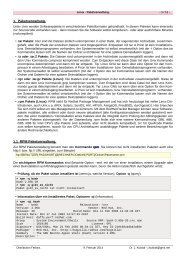
![Parameterdarstellungen [ x(t), y(t) ] Eberhard ... - home . snafu . de](https://img.yumpu.com/22517728/1/184x260/parameterdarstellungen-xt-yt-eberhard-home-snafu-de.jpg?quality=85)
